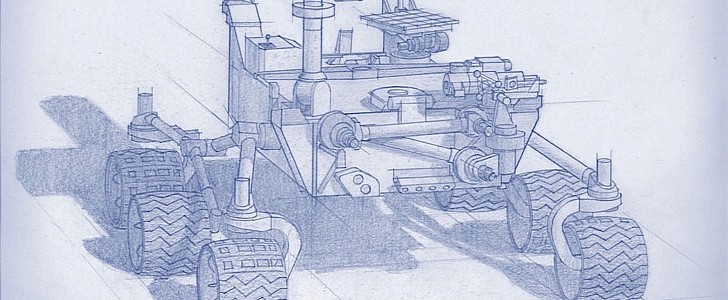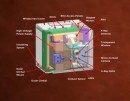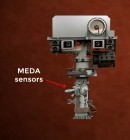Less than an hour is left at the time of this writing until the launch of the Perseverance rover on its mission to Mars. The machine is the biggest, baddest, and most ambitious of its kind ever to be sent to the red plant.
July 30 is the first day in a two-week long launch window that would insert the spacecraft carrying the rover on the right trajectory - this would allow it to land in the Jezero Crater in February 2021. At the moment, the mission is “go” so we’ll probably witness this historic moment live, at 7:50 a.m. EDT (11:50 AM GMT).
The Perseverance, named so at the end of a naming competition held last year, is tasked with some of the most important missions a machine of its kind has ever been tasked with. It will try to generate oxygen on the neighboring planet, it will gather samples and store them for a future mission to bring back to Earth, and will even try to launch a helicopter in the Martian atmosphere. All while looking for signs of long-dead life.
The rover is equipped with seven instruments that it will use on its mission. All, and the rover itself, draws power from the so-called Multi-Mission Radioisotope Thermoelectric Generator. MMRTG is described by NASA and the Department of Energy as not being a nuclear reactor, but a nuclear battery.
Somehow, it’s an active battery, as it can convert “heat from the natural radioactive decay of plutonium-238 into a steady flow of electricity.” That produces about 110 watts of power at the beginning of the mission, about as much as light bulb needs on Earth. That energy output will drop of course as time passes by, but it can be stored in two lithium-ion batteries.
You can watch the entire launch action in the video attached below this text.
UPDATE: We just witnessed a live 3.9 earthquake during the live feed. Launch does not appear to be affected.
The Perseverance, named so at the end of a naming competition held last year, is tasked with some of the most important missions a machine of its kind has ever been tasked with. It will try to generate oxygen on the neighboring planet, it will gather samples and store them for a future mission to bring back to Earth, and will even try to launch a helicopter in the Martian atmosphere. All while looking for signs of long-dead life.
The rover is equipped with seven instruments that it will use on its mission. All, and the rover itself, draws power from the so-called Multi-Mission Radioisotope Thermoelectric Generator. MMRTG is described by NASA and the Department of Energy as not being a nuclear reactor, but a nuclear battery.
Somehow, it’s an active battery, as it can convert “heat from the natural radioactive decay of plutonium-238 into a steady flow of electricity.” That produces about 110 watts of power at the beginning of the mission, about as much as light bulb needs on Earth. That energy output will drop of course as time passes by, but it can be stored in two lithium-ion batteries.
You can watch the entire launch action in the video attached below this text.
UPDATE: We just witnessed a live 3.9 earthquake during the live feed. Launch does not appear to be affected.













